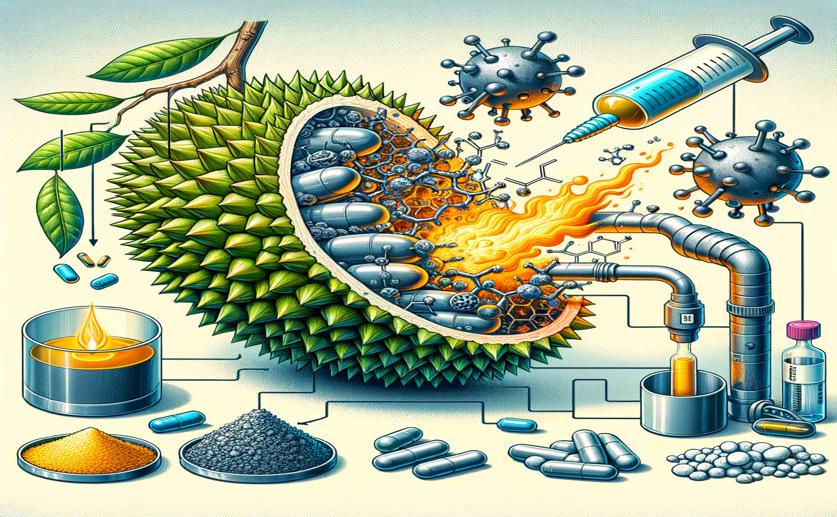
Boosting Antibiotic Breakdown Using Durian Peel Biochar and Special Metal Oxides
Jim Crocker
30th May, 2024

Image Source: Natural Science News, 2024
Key Findings
- Researchers at Le Quy Don Technical University developed a new catalyst system to degrade the antibiotic ciprofloxacin in water
- The catalyst, made from CuCoFe-LDH and biochar from durian shells, degraded over 95% of ciprofloxacin in just 10 minutes
- This system works efficiently across a wide pH range (3-9) and uses reactive oxygen species to break down the antibiotic
EnvironmentSustainabilityBiochem
References
Main Study
1) Enhancing catalytic activity of CuCoFe-layered double oxide towards peroxymonosulfate activation by coupling with biochar derived from durian peel for antibiotic degradation: the role of C=O in biochar and underlying mechanism of built-in electric field.
Published 27th May, 2024
https://doi.org/10.1016/j.chemosphere.2024.142452
Related Studies
2) Functional facet isotype junction and semiconductor/r-GO minor Schottky barrier tailored In2S3@r-GO@(040/110)-BiVO4 ternary hybrid.
3) Metal-organic framework-derived CuCo/carbon as an efficient magnetic heterogeneous catalyst for persulfate activation and ciprofloxacin degradation.
4) Surface-bound radical control rapid organic contaminant degradation through peroxymonosulfate activation by reduced Fe-bearing smectite clays.



 23rd May, 2024 | Jenn Hoskins
23rd May, 2024 | Jenn Hoskins